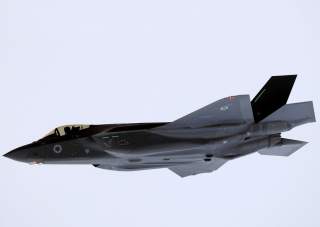Israel 'Modified' Their F-35 Stealth Fighters. The Results Speak for Themselves.
The finest.
Israeli jets violated Turkish airspace in 2007 in order to destroy a nuclear reactor in northern Syria. However a sustained air campaign traversing foreign airspace would be more difficult to execute than a one-time raid. However, the F-35 has a greater combat radius than most fourth-generation jets, due to its inability to carry extra fuel tanks without compromising stealth. Furthermore, it could more easily penetrate Iran’s air defenses, and evade detection by neutral countries, than fourth-generation jets, lowering the necessary size of a strike package.
Over time, Israel will likely acquire additional F-35s, as it intends for the type to replace its fleet of over 320 F-16s, starting with the now very old F-16A Netz aircraft first acquired in 1980s. Reportedly, Israel is even interested in possibly acquiring F-35B jump jets down the line. One usually thinks of F-35Bs as serving from smaller aircraft carriers or island bases, but Israel sees role for jump jets by dispersing them to remote improvised airstrips to avoid enemy air-base attacks. This still seems a somewhat extravagant solution to the threat, given that the F-35B is more expensive and has inferior performance to the F-35A for most other purposes. This may explain why an F-35B purchase is allegedly more popular with Israeli politicians than the Israeli Air Force.
Israel has also been a proponent of a two-seat variant of the F-35, which would be convenient for training purposes, and also allow a back-seat Weapon System Officer to manage the F-35s precision-guided weapons while the pilot focuses on flying.
At any rate, the activities of Israel’s Adirs are likely to continue to remain conspicuously in the news, if less so on hostile radars.
Sébastien Roblin holds a master’s degree in conflict resolution from Georgetown University and served as a university instructor for the Peace Corps in China. He has also worked in education, editing and refugee resettlement in France and the United States. He currently writes on security and military history for War Is Boring. (This first appeared in 2018.) Image: Reuters.

